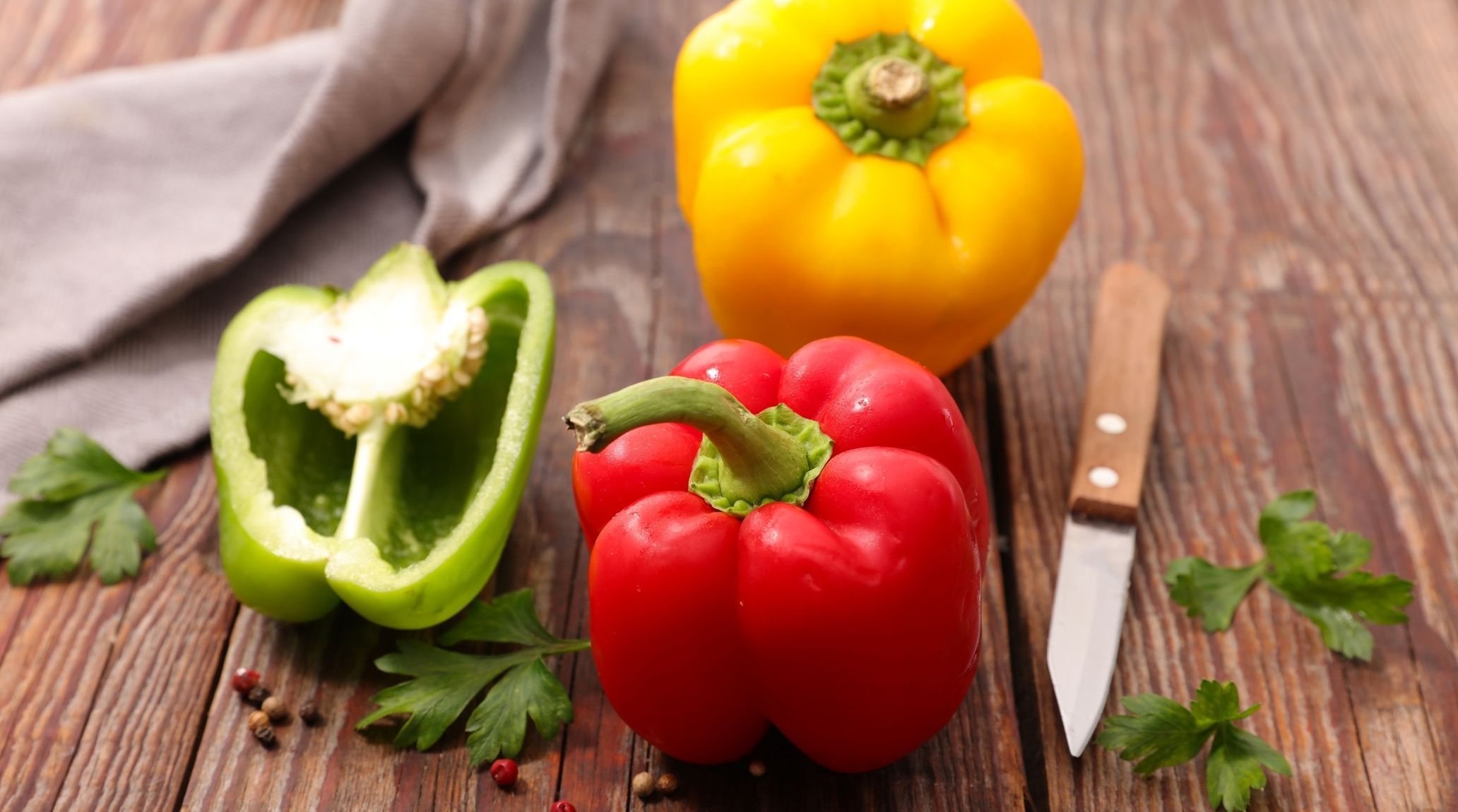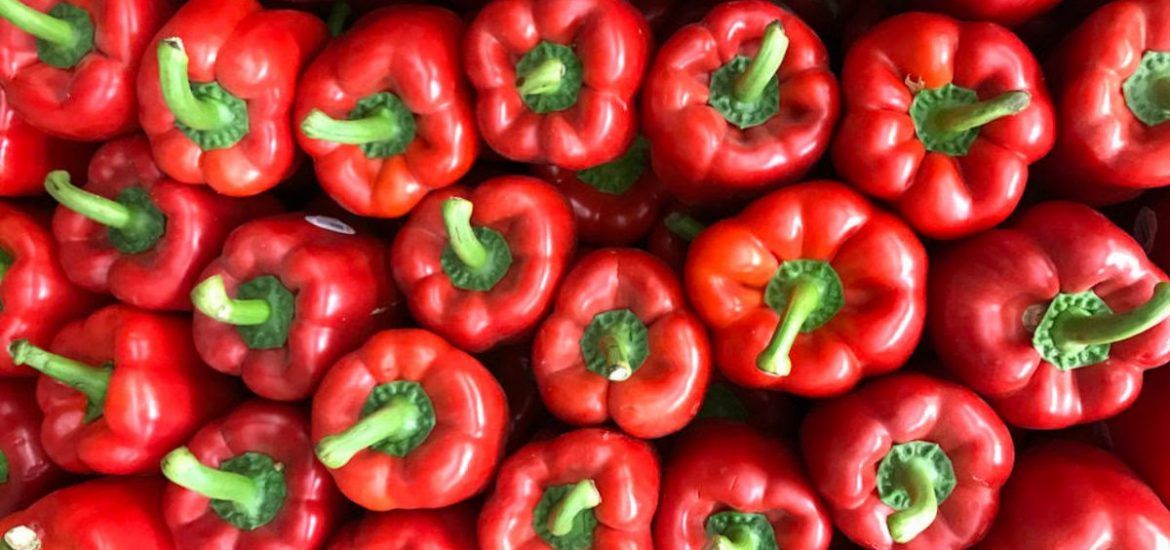
“
Bell peppers are not only a colorful and crunchy addition to your meals but also a fascinating subject of study. In this blog, we'll delve into the fascinating facts about bell peppers, exploring their rich history, impressive health benefits, and the variety of colors they come in. From their nutritional value to their unique flavors and uses, bell peppers offer more than meets the eye. Whether you're a food enthusiast or simply curious about this versatile vegetable, you'll find plenty of intriguing information to enhance your appreciation of bell peppers. Join us as we uncover the many layers of these remarkable vegetables.1
1
”

Bell peppers in green, red, yellow, and orange colors vary by ripeness. Green peppers are bitter, red ones are sweet and yellow and orange offer balanced sweetness, each with distinct nutrient profiles.
Bell peppers primarily contain carbohydrates, with about 6 grams per 100 grams. These carbs include sugars like glucose and fructose, giving them their sweetness. They also provide around 2% fiber by fresh weight. 1
Peter Glazebrook grew the heaviest bell pepper at 750 grams (1 lb 10.4 oz), recognized at the CANNA UK National Giant Vegetables Championships on September 23, 2023, in Malvern, UK. 2
Unlike their spicier relatives, bell peppers do not contain capsaicin, the compound responsible for the heat in chili peppers. This makes them a milder option for those who prefer a sweet crunch over spiciness. 3
Dr. Adriana M. De Oliveira's 2019 research found that the antioxidant content of bell peppers can help reduce inflammation and oxidative stress, potentially lowering the risk of cardiovascular diseases.4
Bell peppers are high in vitamins A and C, potassium, and magnesium. Vitamin A supports vision and immunity; vitamin C boosts immune health and skin repair; potassium regulates blood pressure; and magnesium aids muscle function.5
Bell peppers were among the crops grown aboard the International Space Station as part of NASA's Veggie experiment. Their successful cultivation in space highlights their potential for future space missions and long-term space habitation.6
The fastest time to slice a bell pepper is 9.43 seconds, set by Wallace Wong, also known as “Six Pack Chef,” in London, UK, on June 12, 2024. He attempted nine chopping records during the event.7
Bell peppers were first domesticated in Central and South America. They were an important crop for indigenous peoples long before their introduction to Europe in the 15th century by Christopher Columbus.8
Bell pepper plants have been found to act as a natural pest repellent. The compounds in the peppers can deter common garden pests, making them a useful addition to organic gardening practices.9
There are over 3,000 different varieties of bell peppers worldwide, each with its unique characteristics. This genetic diversity allows for a wide range of flavors, sizes, and shapes.10

Red bell peppers are sweeter than green ones. As bell peppers ripen from green to red, their natural sugars increase, resulting in a sweeter flavor compared to the more bitter taste of green peppers.
Due to their high water content and low-calorie density, bell peppers make an excellent addition to weight-loss diets. They provide a satisfying crunch without adding excessive calories.11
The high levels of vitamins B6 and folate in bell peppers are important for brain health. These nutrients help in the production of neurotransmitters and may contribute to better mood regulation and cognitive function.12
Bell peppers thrive in warm, sunny weather, ideally with temperatures between 70-85°F (21-29°C). They need well-drained soil and consistent moisture. Plant them after the last frost and ensure they receive full sun for optimal growth.13
Bell peppers are generally safe for most adults, but some may have allergies or experience cross-reactivity with pollen allergies. While rare, certain individuals might react negatively to compounds in bell peppers.14
Bell peppers are a significant crop in global agriculture, contributing billions of dollars annually to the economy. Major producers include China, Mexico, and the United States, where bell peppers are cultivated on a large scale and exported worldwide.15
Bell peppers and their byproducts can be used in animal feed. The vegetable’s fiber and nutrient content make it a beneficial supplement for livestock, improving their diet and overall health.16
The waste from bell pepper production, such as seeds and stems, can be utilized in composting and as natural fertilizer, reducing agricultural waste and supporting soil health.17
Bell peppers are a major export product for countries like Mexico and Spain. The international trade of bell peppers contributes significantly to the economies of these nations and supports global food supply chains.18


